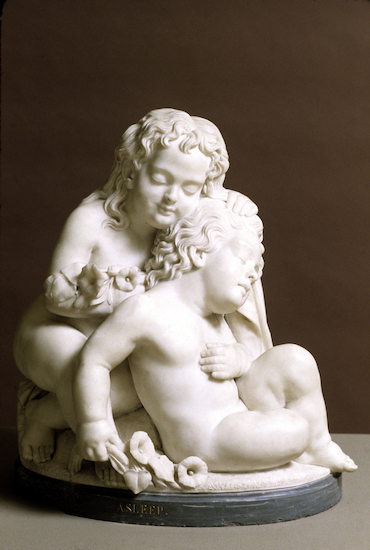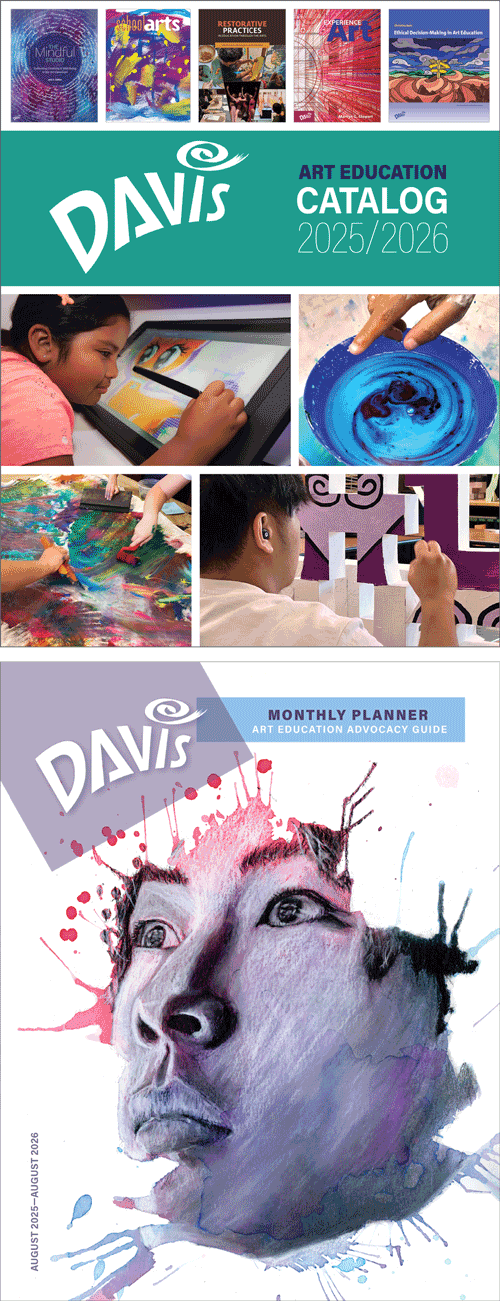Artist Birthday: Edmonia Lewis
Edmonia Lewis was a pioneering African American and woman artist, at a time when it was difficult for either to get an arts education. Lewis skillfully learned the style that was dear to American patrons’ hearts—Neoclassicism.
Artist Birthday for 7 July: Edmonia Lewis (ca. 1844–1909, United States)
Edmonia Lewis was not only a pioneering woman artist, but also as an African American and Indigenous American artist.
 |
| Edmonia Lewis, Asleep, 1871. Marble, height: 63 cm. San Jose Library, California. Image © 2025 Davis Art Images, photography provided by the Los Angeles County Museum from the landmark exhibition Two Centuries of Black American Art. (1976) |
In beautifully rendered surfaces of marble, Asleep is an example of the cutesy, oft-produced, pseudo classically-inspired sculptures that helped Lewis earn an income while improving her technique in Rome. It is an example of the kind of sentimental subject matter couched in classicism which she sold at the Centennial Exposition in Philadelphia in 1876. There she was one of only two African American artists represented (the other was Tanner). Asleep was part of a group of sculptures Lewis executed that won a gold medal at an exposition held by the Naples Academy of Art and Science. The beautifully carved figures—which allude to ancient Greek and Roman putti (baby angels)—reveal an interest in subtle textural differences that Lewis may have gleaned by observing Michelangelo's work in Florence and Rome.
Sculpture of the 1800s—in Western Europe and America—was primarily Neoclassical in style. It was a persistence of the aesthetic qualities of ancient Greek and Roman sculpture. Because sculpture was considered inferior to painting in European and American academic teaching, style in sculpture did not vary greatly for most of that century. For women, and particularly African Americans, sculpture was a hard field in which to find study. The medium was considered "unladylike," and very few art schools admitted either women or African Americans.
Lewis was the child of an African American father who had escaped slavery into Canada, and a half-Chippewa mother. Both parents died within a few years of her birth and she was raised by her mother's people on a reservation in upstate New York. Starting in 1859, she attended Oberlin College in Ohio, one of the first schools to educate African Americans and women students. Even there, however, Lewis faced resistance because of her expressed desire to become a sculptor, and because of her race.
In 1863 she left Oberlin and moved to Boston to pursue her vocation as a sculptor. Other than private lessons in modeling clay, Lewis was primarily self-taught at that point. In Boston she was greatly influenced by the prominent American sculptors of the day—Hiram Powers (1805–1873) and Horatio Greenough (1805–1852). Both sculptors were Neoclassicists, working in many media, including bronze. Lewis ultimately worked exclusively in marble. Living frugally, Lewis earned an income making flattering portrait busts of people of all income levels. She was the first African American woman artist to make a profession as an artist.
By 1865 Lewis had earned enough for a trip to Italy. There she saw Greek and Roman sculpture first hand, and determined to pursue a sculpture career in the Neoclassical style. She was impressed with the classicism seen in Renaissance and Baroque sculpture as well. Working in Rome, her classical style matured. She was a permanent ex-patriate by 1880, associating with a community of American women sculptors living in Rome, including Anne Vanderbilt Whitney (1821–1915) and Harriet Hosmer (1830–1908), both of whom worked in an academic classical style.
Although she sold her works successfully both abroad and in America, almost none of what she produced after 1878 has survived. It is known that she was still producing sculpture in the Neoclassical style into her fifties, although Rome was no longer the center of the art world. Even Hosmer and Whitney had moved to Paris, the new art capital.
Correlations to Davis programs: Davis Collections: African American Art, pre-1920; Davis Collections: Women Artists pre-1900s; Davis Collections: Women Artist Groundbreakers

Comments